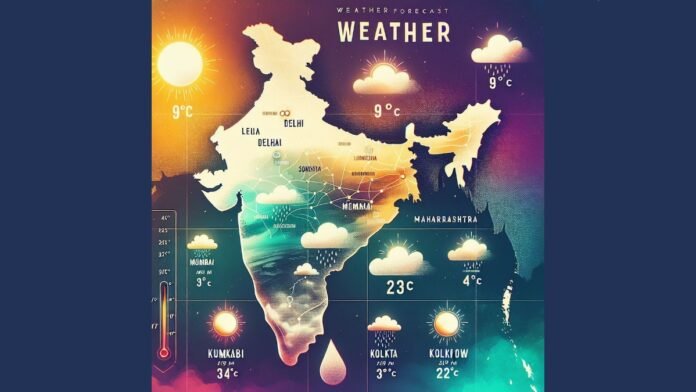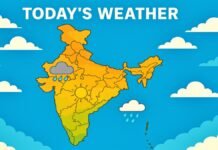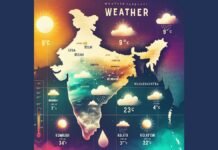
Key Points
- Delhi records its wettest May since 1901 with 188.9 mm rainfall, breaking all previous records.
- Mumbai and Bengaluru also witness historic rainfall, with monsoon arriving weeks ahead of schedule.
- No heatwave days in Delhi this May, a sharp contrast to previous years.
- IMD issues red and orange alerts for severe weather in Northeast, Rajasthan, Himachal, and other states.
- Widespread disruptions: waterlogging, flight delays, and power outages reported in major cities.
- Heavy rains forecast to continue in multiple regions, with advisories for public safety.
New Delhi: India is witnessing a historic start to the 2025 monsoon season, with major cities and states shattering decades-old rainfall records and the monsoon arriving weeks ahead of schedule.
Delhi has recorded its wettest May ever, with a staggering 188.9 mm of rain, surpassing the previous record of 165 mm set in 2008. The city was lashed by intense thunderstorms and heavy winds, with a single storm on May 25 dumping 81.4 mm of rain in just a few hours. This deluge led to widespread waterlogging, uprooted trees, power outages, and major disruptions at the airport, affecting nearly 400 flights. Notably, Delhi experienced zero heatwave days this May, a stark contrast to last year’s six, as the rains kept temperatures well below normal.
Mumbai and Bengaluru: Decades-Old Records Broken
Mumbai experienced its earliest monsoon onset in 69 years, arriving 16 days ahead of schedule and breaking a 107-year record for May rainfall. The city faced continuous downpours, waterlogged streets, and transport chaos, with over 250 flights affected and several neighborhoods inundated.
Bengaluru and much of Karnataka have also seen unprecedented rainfall, with 60% of the state covered by monsoon rains as of May 25 two weeks earlier than usual. Karnataka recorded 139.3 mm of rain by May 25, making this the wettest May in 15 years and 160% above the monthly average.
Northeast, Rajasthan, and Other States on High Alert
The India Meteorological Department (IMD) has issued red alerts for five northeastern states Arunachal Pradesh, Assam, Nagaland, Manipur, and Meghalaya warning of heavy to extremely heavy rainfall, squally winds up to 60 km/h, and potential landslides[1]. Manipur is expected to receive especially intense rainfall until June 1.
Rajasthan, Himachal Pradesh, Haryana, Punjab, and Madhya Pradesh are also under storm and rain alerts. Rajasthan’s Barmer district recorded 30 mm of rain in 24 hours, the highest May one-day rainfall in six years. Storms and rain are forecast to continue in Madhya Pradesh, with alerts in 21 districts, including Bhopal, where preparations are underway for Prime Minister Narendra Modi’s visit amidst the inclement weather.
Nationwide Impact and Outlook
The IMD has issued advisories for almost every region, including Kerala, Karnataka, Tamil Nadu, Andhra Pradesh, Telangana, Maharashtra, Goa, Chhattisgarh, Gujarat, Jammu and Kashmir, Uttarakhand, Punjab, Haryana, Chandigarh, Uttar Pradesh, West Bengal, Odisha, and all northeastern states. Heavy rainfall, thunderstorms, and gusty winds are expected to persist, with the public advised to stay away from rivers, landslide-prone areas, and take necessary precautions.
Climate Change and Unusual Weather Patterns
Experts link these unprecedented weather events to frequent western disturbances and changing climate patterns, suggesting that such extreme rainfall episodes may become more common in the future. The early and intense monsoon has brought much-needed relief from heatwaves but has also created new challenges in the form of flooding and infrastructure disruptions.
May 2025 has rewritten the record books across India, with early and intense monsoon rains bringing both relief and disruption. As cities grapple with historic rainfall and the IMD maintains high alerts, the nation is urged to remain vigilant as the monsoon continues its dramatic advance.












































